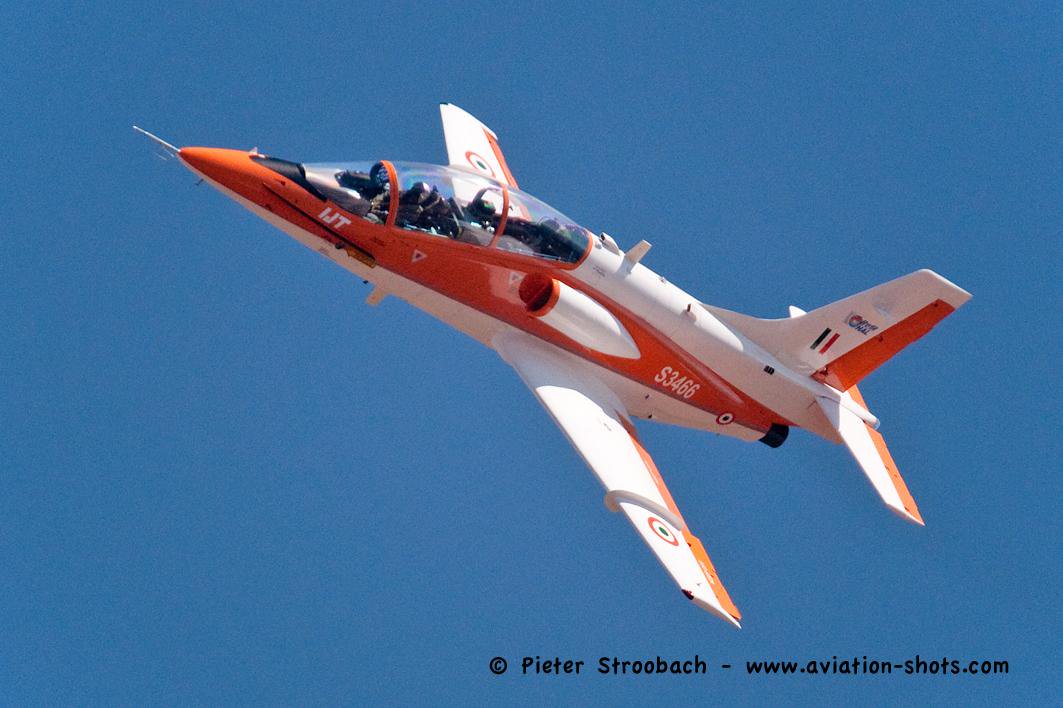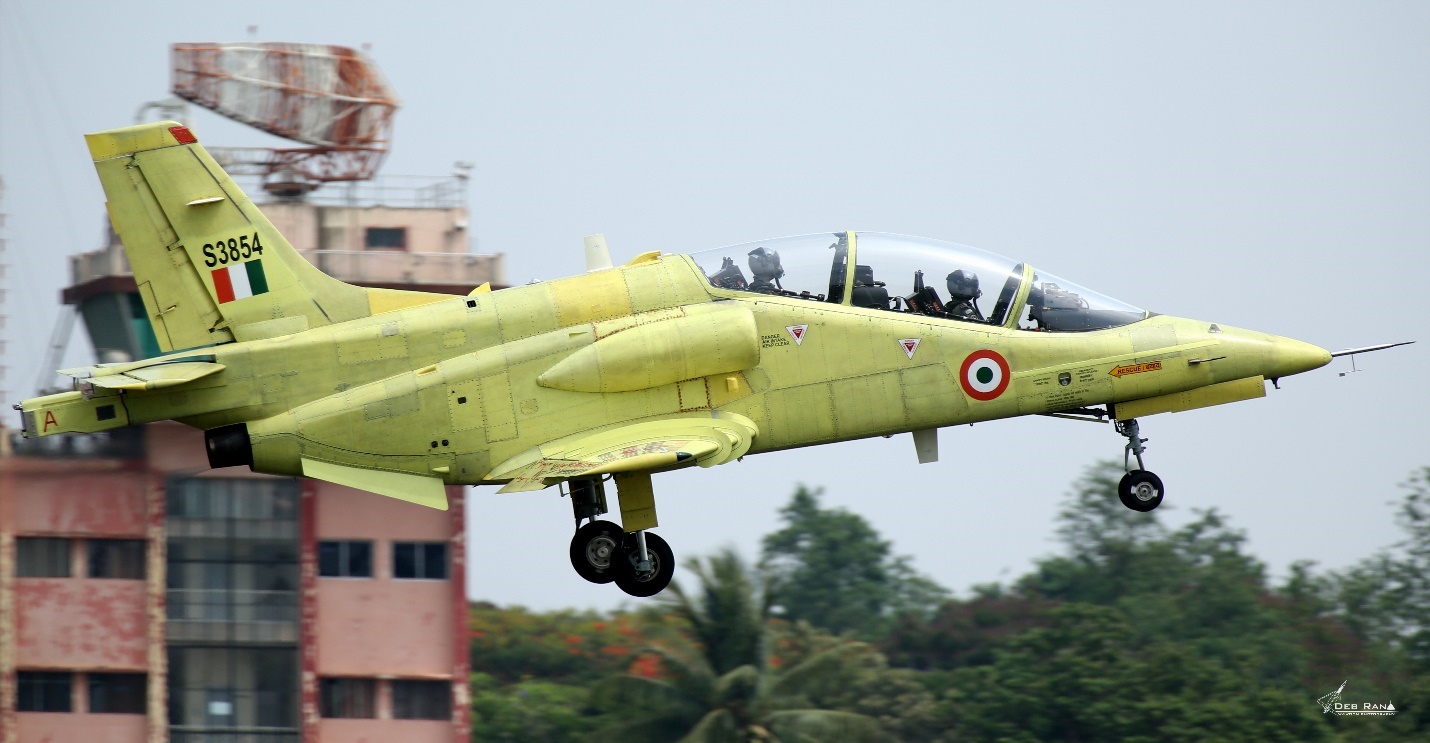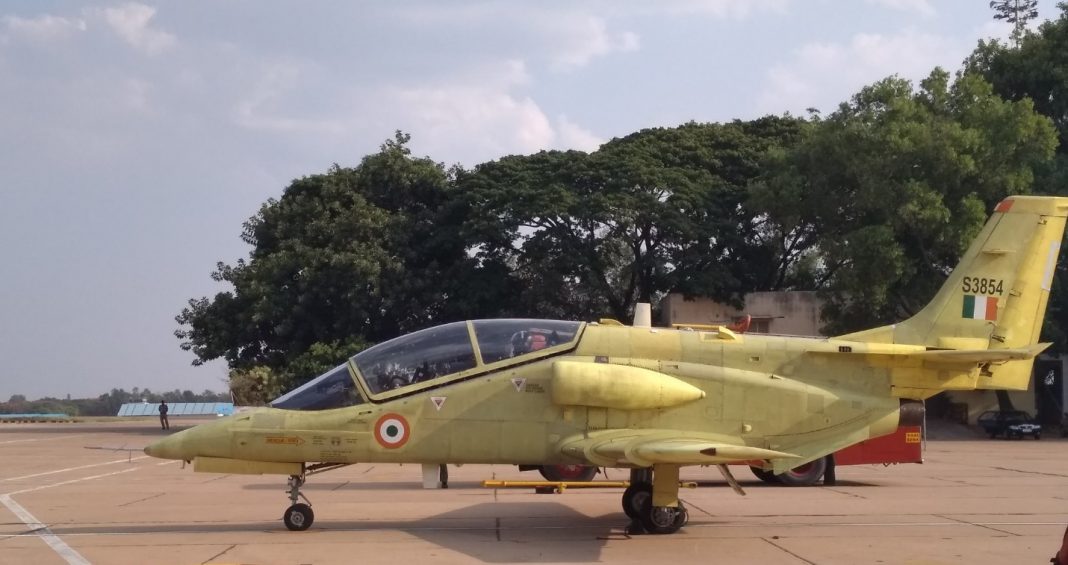Rising like a phoenix above Bengaluru, Hindustan Aeronautics Limited’s HJT-36 ‘Sitara’ Intermediate Jet Trainer (IJT), took to the sky for the first time in three years on April 17, 2019. The IJT program has been resurrected on account of both renewed interest from the Indian Air Force (IAF) as well as HAL’s confidence in the modifications it has made to the design. With these modifications, the aircraft is projected to clear its stall and spin tests and achieve certification by 2020. If this objective is indeed achieved, HAL will commence serial production of the HJT-36 to fulfil the role that is discharged by the HJT-16 Kiran trainer with respect to Stage-2 pilot training in the IAF.
The Rise
Back in March 2003, the IJT program had been the talk of town after the first prototype had taken to the skies within four years of project sanction in July 1999. After all, such a short gestation period for an Indian aviation program had not been seen since Dr. Ghatge’s famous HT-2 trainer development effort in 1948 and that too for a complex machine such as the HJT-36. Achieving first flight on such a tight schedule was made possible by embracing many modern design techniques for the first time in HAL, and possibly in India. For example, a Numerical Master Geometry (NMG) was created first and made centrally available to various groups like wind tunnel testing, aerodynamics, structural analysis, tooling etc. for concurrent engineering. The end-result was a modern IJT which HAL was proud to showcase at various airshows like Aero India and Farnborough.
Capable of training pilots in air to air, air to land and waypoint navigation, the HJT-36 boasts a composite body, a modern full glass cockpit, zero-zero ejection seats and modern avionics. It can carry a ton of armament in the form of podded guns, within visual range air to air missiles, rockets and anti-tank missiles. This makes it an effective solution against a variety of targets such as unmanned aerial vehicles, soft skinned vehicles and tanks, for which a supersonic fighter aircraft would be overkill. Also, its ability to fly slow as a trainer is a serious advantage when it comes to acquiring such relatively slow moving targets.

Figure 1: The clean lines of the first prototype. Photo credit: As shown in image.
The Stall
However, even as HAL was celebrating this design triumph, problems had already started brewing. For one, the aircraft had significantly overshot its designed weight. Even when its original Larzac 04-H20 engine was replaced by the more powerful Saturn AI-55I engine which provided 15% more thrust, the Limited Series Production (LSP) units required further weight reduction. What is more, the AI-55I engine was a new design when introduced by the program in 2007 and underwent teething problems unlike the mature Larzac engines that had already flown over 0.75 million hours. This led to low overall availability of the LSPs for testing.
An even bigger problem which has proved insurmountable till now is the aircraft’s undesirable stall and (subsequent) spin recovery characteristics. As such, being a trainer, the requirements for the aircraft’s stall and spin profile are rather stringent:
- The aircraft must be stall-able,
- The onset of stall must be unmistakable,
- Behaviour at stall must be deterministic, and
- Recovery from the stall and the ensuing spin must be guaranteed and deterministic.
Although, the aircraft was stall-able, the onset and behavior were not ideal for a trainee aircraft. In training, a trainee pilot brings the aircraft to ‘wings level’ and pulls back on the stick (raising its nose). As the wings reach their critical angle of attack (AoA), the plane stalls. At this point (or just before) if a yaw input is provided the plane enters a flat spin where it begins to fall like a leaf through air. The trajectory is straight down, but the plane spins around the vertical axis. This is a disorienting and harrowing experience for any pilot, let alone one who is a mere trainee. Therefore, it is desired that the rate of spin is low to moderate and that the plane always stays right side up. This was not guaranteed on the IJT. As the aircraft came to a stall, a wing drop occurred. This happens when one of the wings stalls before the other due to small asymmetry in building the plane. The recovery was also difficult. In order to recover from a flat spin, the control surfaces on the tail must be effective throughout the spin and recovery. This was not the case with IJT.
HAL tried to overcome these problems using a variety of fixes without a major redesign. First, it installed nose strakes, which form two vortices on either side of the nose to stabilize the aircraft at high AoA by having symmetric side forces. Such strakes had to be carefully designed so that they did not interfere with the working of the engine air intakes. Thereafter, ventral fins were also added to increase the directional stability and efficacy of the tail surfaces.

Figure 2: LSP 1 with nose strakes and ventral fins undergoing drop tank test. Photo credit: Hindustan Aeronautics Limited.
But these modifications did not yield the desired results. As wing drops continued to be witnessed, HAL also experimented with a wing fence on the wing. The thinking behind the use of a wing fence is thus:
At the onset of stall, it is desirable that the wing stalls progressively from the root to the tip. Among other things, this helps with containing the wing drop phenomenon as the wing root has a lower roll moment than the tip. This is typically achieved by having a ‘twist’ or ‘washout’ in the wing where the root is set at a slightly higher AoA than the tip, thus allowing it to stall first. When this is not enough, wing fences are used to minimize span wise airflow (loss of lift) whose effect is maximum at the wing tips.

Figure 3: IJT prototype with wing fence in addition to the nose strake. Photo credits as shown in image.
However, when none of the above changes produced the required characteristics, HAL removed the nose strakes and wing fence and introduced vortex generators on the outer half of the wing with the aim of energizing the airflow (and therefore delay stall) over the outer half of the wing. Unfortunately, this did not prove useful either.
The last configuration that HAL tried without making major redesign was the removal of the vortex generators and the reintroduction of the wing fences, this time two over each wing. However, by this time, it had become clear that these fixes were inadequate, and a major redesign could not be avoided. The last few test flights were done after the installation of spin chutes, just in case the aircraft could not be recovered under its own controls.
By 2017, the IJT program was running years behind schedule and the IAF had settled into a training curriculum which relied heavily on its newly inducted Pilatus PC-7 MkII and BAE Hawk AJTs, while using the HJT-16 Kirans in a reduced role. With no quick fix in sight, the IAF lost confidence and interest in the project and majority of its personnel assigned to the project dissolved away, getting absorbed into other HAL projects.

Figure 4 LSP-4 conducting one the last test flights. The two wing fences, ventral fins and the spin chute can be seen. Photo credit: Deb Rana.
The Recovery
However, a small team of about 20 designers continued to strive on the project. It was evident that the aircraft required a major redesign, and yet the resources made available to the project were minimal. Another major challenge is that India does not have a wind tunnel suitable for undertaking spin tests. Given these tight constraints, the team sought to modify the aircraft with minimal changes and maximum reuse.
They focused on the tail and performed extensive computational fluid dynamics (CFD) simulations. Based on these simulations, a wind tunnel model was created and sent for extensive tests to ONERA, France. The results were encouraging and a decision was made to modify LSP-4 for flight testing. This decision was made easier with renewed support from the IAF which wants to maintain its three-stage training syllabus and is therefore in need of a replacement for the HJT-16 Kiran.

Figure 5: LSP-4 with modifications to the tail section. Photo credit: Hindustan Aeronautics Limited.
The modified aircraft can be seen in Figure 6, above. The front and mid fuselage and wings look unaltered since the grounding. The wing fences and ventral fins have also been maintained. However, the empennage has been severely altered. The vertical fin has been moved back by over a meter. This greatly enhances its efficacy. The rudder now extends beyond the end of the fuselage and below the vertical stabilizer. With 30 percent larger area, it is guaranteed that some part of it will always be in clean airflow even at high AoAs. Leading edge strakes have also been added to the root of the horizontal stabilizer. At high AoAs, they generate vortices that energize the airflow over the vertical stabilizer and the fin.
At this moment, it is unclear if the weight reduction efforts have yielded results, but the return to flight status is a welcome sign. If HAL is able to make the modifications to all 13 IJTs that it has built to date, it can complete the flight tests rather quickly. At the moment, HAL has about four years to bring the resurrected HJT-36 up to speed, if its ‘phoenix’ has to replace the HJT-16 which will be retired from IAF service by then.
Indranil Roy is an aerospace watcher and a part time processor chip designer.
© Delhi Defence Review. Reproducing this content in full without permission is prohibited.
































